
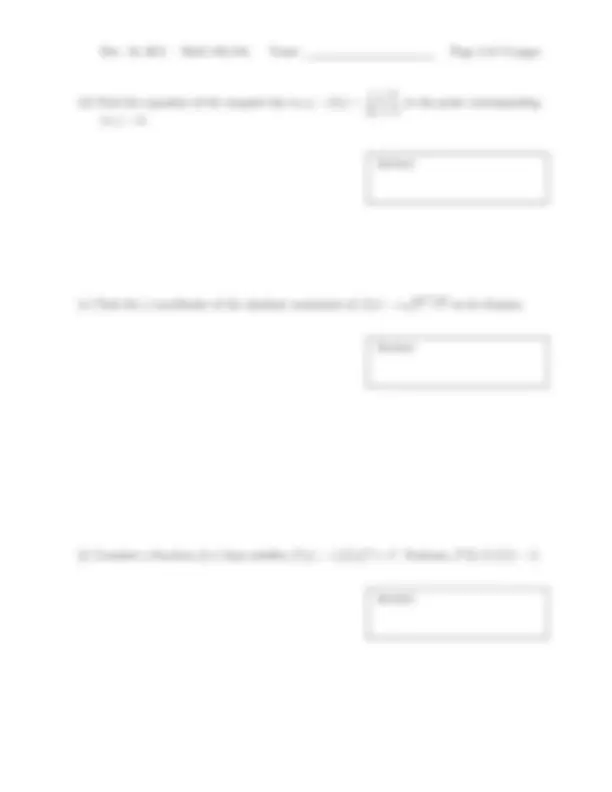
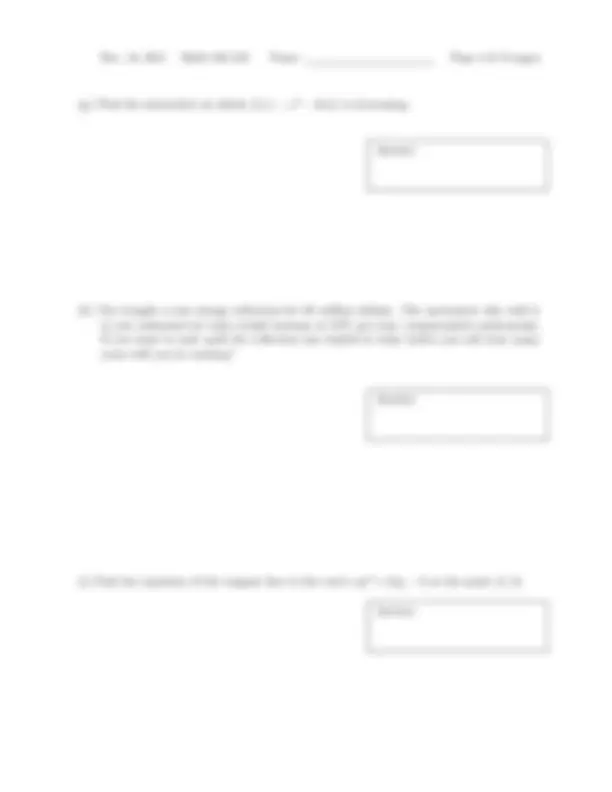
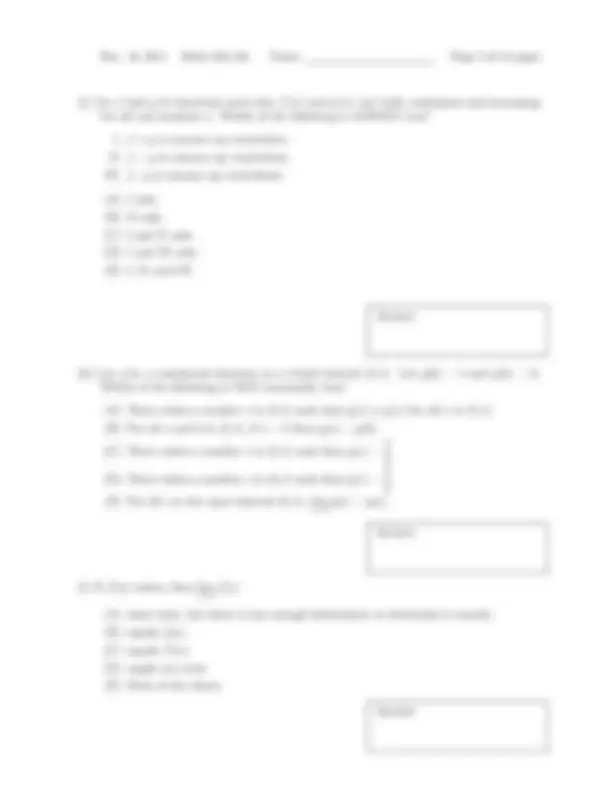
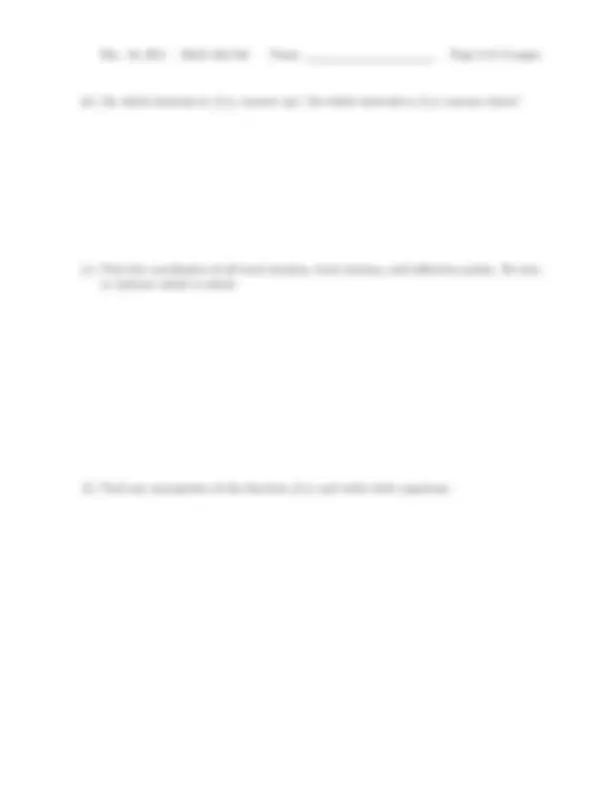
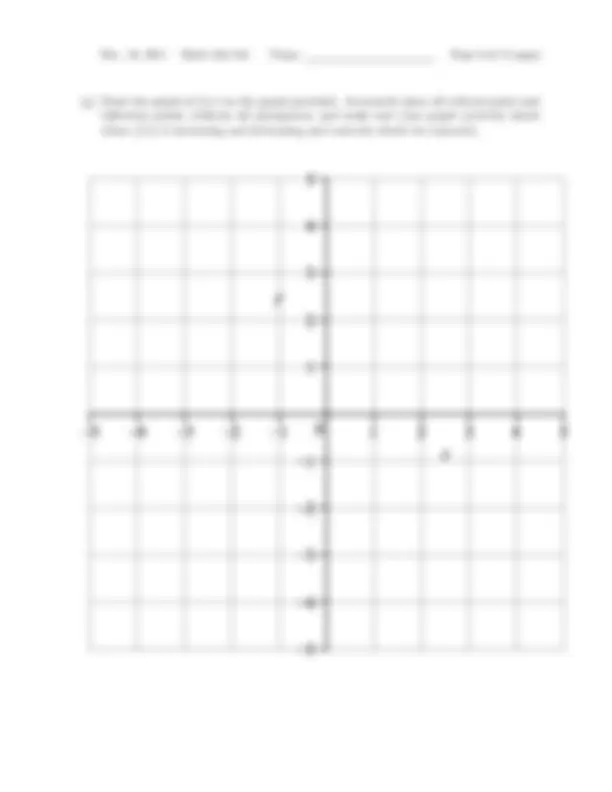
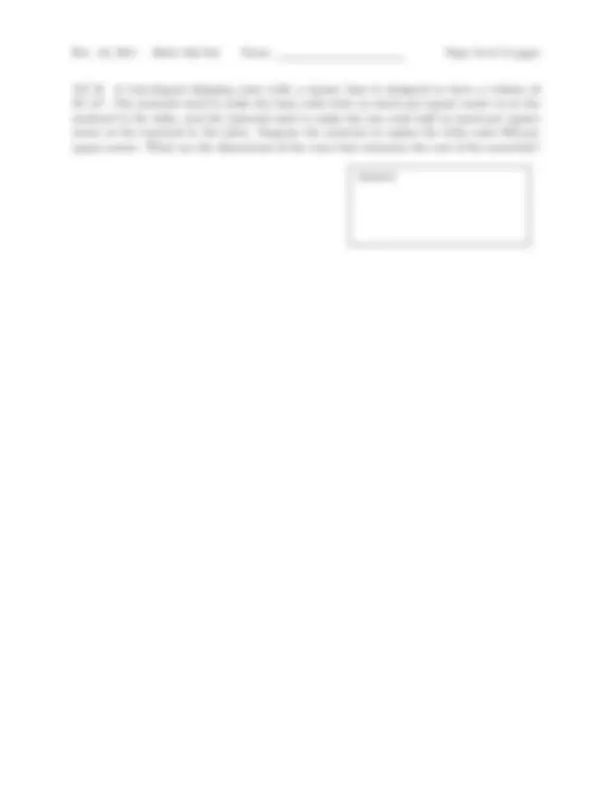
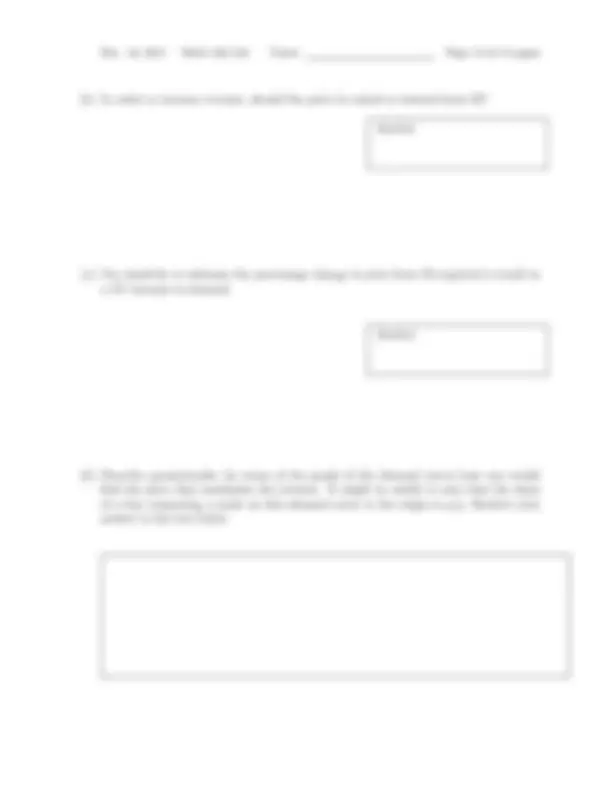
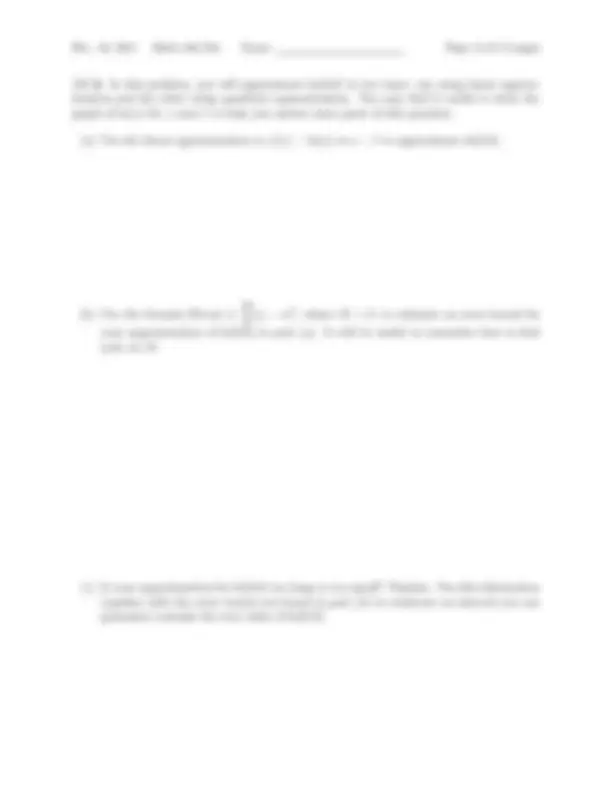
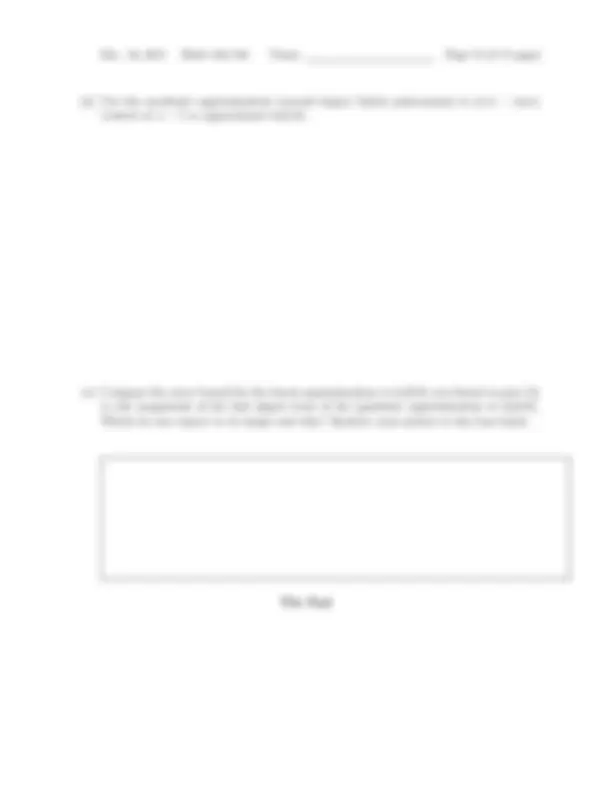


Study with the several resources on Docsity

Earn points by helping other students or get them with a premium plan


Prepare for your exams
Study with the several resources on Docsity

Earn points to download
Earn points by helping other students or get them with a premium plan
Community
Ask the community for help and clear up your study doubts
Discover the best universities in your country according to Docsity users
Free resources
Download our free guides on studying techniques, anxiety management strategies, and thesis advice from Docsity tutors
This is the Exam of Mathematics which includes Continuous, Number, Every, Domain, Continuous Functions, Laplace Transforms, Constant, Simplify, Evaluate, Value of the Constant etc. Key important points are: Compute, Accompanying Work, Value, Continuous, Simplify, Equation, Tangent Line, Point Corresponding, Coordinate, Absolute Maximum
Typology: Exams
1 / 15

This page cannot be seen from the preview
Don't miss anything!










The University of British Columbia Final Examination - December 16, 2011 Mathematics 104/ Time: 2.5 hours
LAST Name
First Name Signature
Student Number
MATH 104 or MATH 184 (Circle one) Section Number:
Special Instructions:
No memory aids are allowed. No communication devices allowed. No calculators allowed. Show all your work; little or no credit will be given for a numerical answer without the correct accompanying work. If you need more space than the space provided, use the back of the previous page. Where boxes are provided for answers, put your final answers in them.
Rules governing examinations
Total 100
Page 1 of 15 pages
[42] 1. Short Problems. Each question is worth 3 points. Put your answer in the box provided and show your work. No credit will be given for the answer without the correct accompanying work, except for multiple choice questions.
(a) Compute lim x→ 4
x^2 − 3 x − 4 √ x − 2
Answer:
(b) Find the value of a for which f (x) is continuous at x = 1, where
f (x) =
2 x^2 − ln(x) if x ≥ 1, x^3 − 4 ax if x < 1.
Answer:
(c) Find f ′(x) where f (x) =
(x^2 + 3 sin^2 x)(ex 2 ) x^4 + 7
. Do NOT simplify your answer.
Answer:
(g) Find the interval(s) on which f (x) = x^2 − ln(x) is increasing.
Answer:
(h) You bought a rare stamp collection for 10 million dollars. The auctioneer who sold it to you estimated its value would increase at 12% per year, compounded continuously. If you want to wait until the collection has tripled in value before you sell, how many years will you be waiting?
Answer:
(i) Find the equation of the tangent line to the curve xy^2 + 2xy = 8 at the point (1, 2).
Answer:
(j) Let f and g be functions such that f ′(x) and g′(x) are both continuous and increasing for all real numbers x. Which of the following is ALWAYS true?
I. f + g is concave up everywhere. II. f − g is concave up everywhere. III. f · g is concave up everywhere.
(A) I only. (B) II only. (C) I and II only. (D) I and III only. (E) I, II, and III.
Answer:
(k) Let g be a continuous function on a closed interval [0, 1]. Let g(0) = 1 and g(1) = 0. Which of the following is NOT necessarily true?
(A) There exists a number c in [0, 1] such that g(c) ≥ g(x) for all x in [0, 1]. (B) For all a and b in [0, 1], if a = b then g(a) = g(b).
(C) There exists a number c in [0, 1] such that g(c) =
(D) There exists a number c in [0, 1] such that g(c) =
(E) For all c in the open interval (0, 1), lim x→c g(c) = g(c).
Answer:
(l) If f ′(a) exists, then lim x→a f (x)
(A) must exist, but there is not enough information to determine it exactly. (B) equals f (a). (C) equals f ′(a). (D) might not exist. (E) None of the above.
Answer:
Long Problems. In questions 2 - 6, show your work. No credit will be given for the answer without the correct accompanying work.
[14] 2. Consider the function
f (x) =
x^3 + x^2 − 2 x − 3 x^2 − 3
Its first and second derivatives are given by
f ′(x) =
(x^2 − 1)(x^2 − 6) (x^2 − 3)^2
, f ′′(x) =
2 x(x^2 + 9) (x^2 − 3)^3
(a) Find all x such that f ′(x) = 0 or f ′(x) does not exist.
(b) Find all x such that f ′′(x) = 0 or f ′′(x) does not exist.
(c) On which intervals is f (x) increasing? On which intervals is f (x) decreasing?
(d) On which intervals is f (x) concave up? On which intervals is f (x) concave down?
(e) Find the coordinates of all local maxima, local minima, and inflection points. Be sure to indicate which is which.
(f) Find any asymptotes of the function f (x) and write their equations.
[12] 3. A box-shaped shipping crate with a square base is designed to have a volume of 16 m^3. The material used to make the base costs twice as much per square metre as as the material in the sides, and the material used to make the top costs half as much per square metre as the material in the sides. Suppose the material to makes the sides costs $20 per square metre. What are the dimensions of the crate that minimize the cost of the materials?
Answer:
[12] 4. A conical tank of height 5 metres and top radius 4 metres is filled with water and then drains into a cylindrical tank with height 5 metres and radius 4 metres. If the water level in the conical tank drops at a constant rate of 0.5 metres per minute, at what rate does the water level in the cylindrical tank rise when the water level in the conical tank is 3 metres? The volume of a cone of radius r and height h is V = 13 πr^2 h. The volume of a cylinder of radius R and height H is V = πR^2 H.
(b) In order to increase revenue, should the price be raised or lowered from $2?
Answer:
(c) Use elasticity to estimate the percentage change in price from $2 required to result in a 5% increase in demand.
Answer:
(d) Describe geometrically (in terms of the graph of the demand curve) how you would find the price that maximizes the revenue. It might be useful to note that the slope of a line connecting a point on this demand curve to the origin is q/p. Restrict your answer to the box below.
[10] 6. In this problem, you will approximate ln(0.9) in two ways: one using linear approx- imation and the other using quadratic approximation. You may find it useful to draw the graph of ln(x) for x near 1 to help you answer some parts of this question.
(a) Use the linear approximation to f (x) = ln(x) at a = 1 to approximate ln(0.9).
(b) Use the formula |Error| ≤
(x − a)^2 , where M > 0, to estimate an error bound for your approximation of ln(0.9) in part (a). It will be useful to remember how to find such an M.
(c) Is your approximation for ln(0.9) too large or too small? Explain. Use this information together with the error bound you found in part (b) to construct an interval you can guarantee contains the true value of ln(0.9).